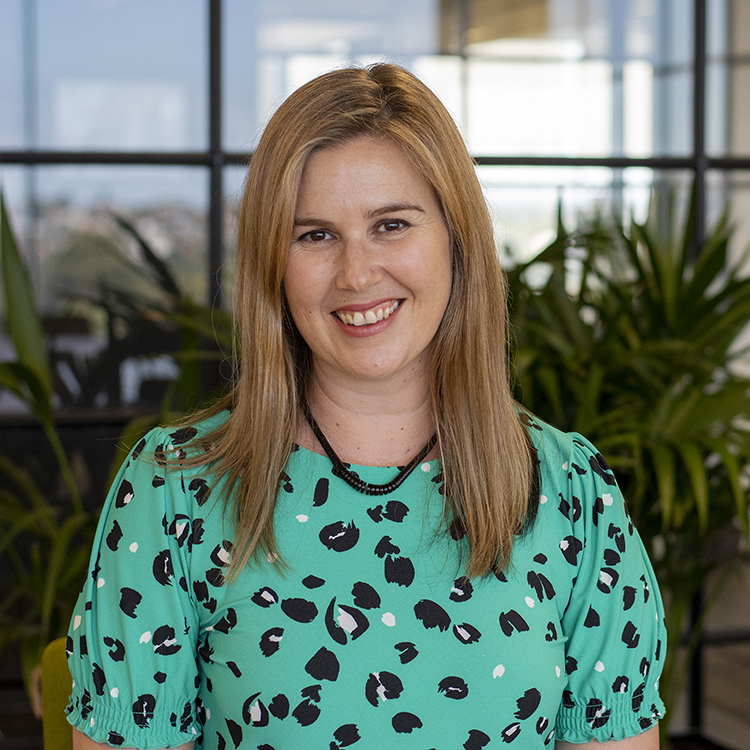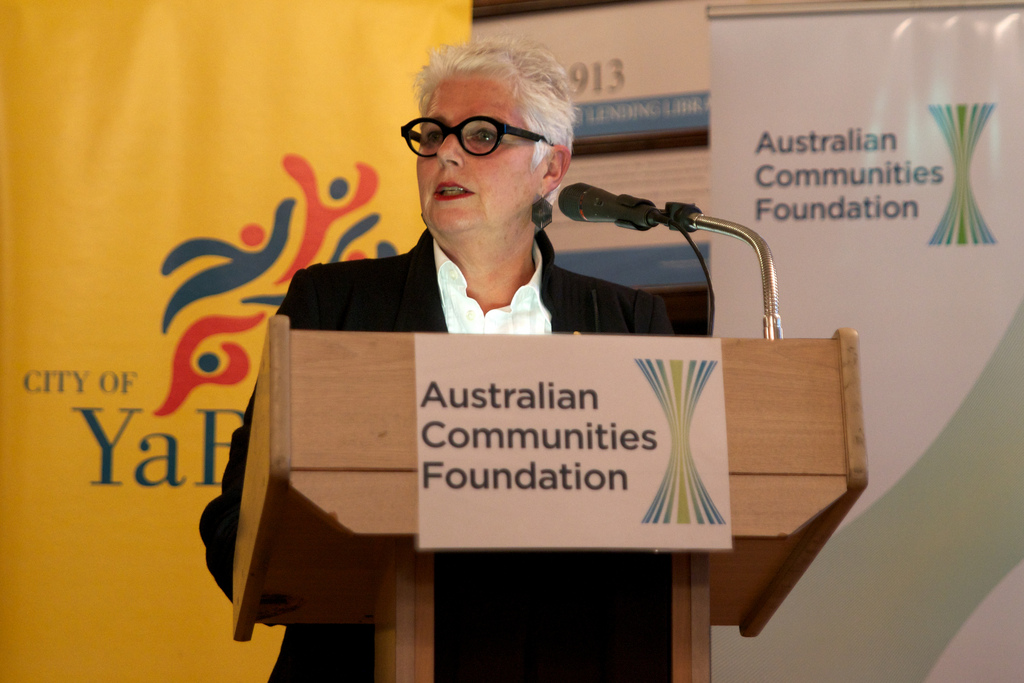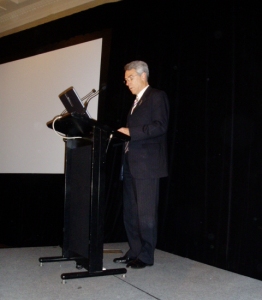Co-founders and Patrons of Australian Communities Foundation (ACF), Marion Webster, OAM and Hayden Raysmith, AM pioneered the community foundation model in Australia.
25 years of giving: Reflections from Marion Webster and Hayden Raysmith

After a modest start in 1997, when the fledgling ACF operated out of Marion’s spare bedroom “with pen and paper and a MYOB program”, the Foundation is now home to 400-plus funds and foundations which have collectively distributed more than $100 million across Australia and overseas.
With 2022 marking ACF’s 25th anniversary, Hayden and Marion recently reflected on the Foundation’s growth, the challenges facing philanthropy, and their hopes for the future.
The way in which ACF has evolved over time has been one of its greatest strengths.
How does it feel to see the organisation you established all those years ago achieve such significant milestones?
MW: I’m just filled with such enormous pride – I can’t believe that the organisation has come this far, it really is amazing. I also have a sense that there’s still enormous generosity in Australia and if we can promote the sort of philanthropy ACF does well, that there is so much room for even more growth and success.
HR: To be honest, one of the first things I felt was a sense of relief! It’s almost like watching your kids grow up, and you’re never quite sure how they’re travelling – you continue to worry about how it might ultimately turn out even though the model’s been quite secure, and the funding’s been terrific for some time.
It was also confirmation that the community foundation model that we brought to Australia all those years ago has stood the test of time and was doing so well.
The way in which ACF has evolved over time has been one of its greatest strengths.

Marion speaking at an ACF event
When the Foundation was first starting out, what did you hope it would ultimately achieve?
MW: To be honest, I didn’t know. I’d had quite a lot of exposure to community foundations internationally, particularly in the US, so I knew how successful they could be, but they weren’t terribly successful in the UK which was more where Australia’s affinities were in terms of the law and people’s approach to philanthropy.
There were certainly times when I questioned whether we could make it work, but I knew in my bones that we had to give it our best shot and we had to put everything into making it work.
Also, there’s no way I could’ve tackled it without Hayden. We bring different styles and views, and that complementary set of skills has paid off.
HR: I agree very much with that. Marion’s experience overseas and the knowledge she gleaned from the US and UK was key.
I don’t know that I had particular goals in the early days of what was to be achieved, it was more about creating an avenue where smaller donors could actually make a contribution to the organisations they were passionate about.
MW: That’s an interesting point and it’s worth noting that those discussions were the first time, I think, anyone in Australia had tried to democratise philanthropy.
I also remember that it took an enormous amount of trust building to persuade people that we could help them manage their philanthropy better, because the question at the outset was always, ‘Why don’t we just give directly? What’s the benefit of coming through you?’ And in that early stage, we didn’t have a community of donors, it was a more disparate group of donors who had different aims and commitments to various charities, so it took a lot of work to shift people’s thinking to give through the foundation.
The building of trust has enabled our donors, in many cases, to be our best advocates.
Are there any personal highlights from this journey that stand out for you?

MW: Something that stands out for me is that, despite us starting out as a tiny little dot on the horizon, we were embraced by the other progressive foundations and were able to work with them right from the start.
There was also a group of philanthropists who were supportive of what we were trying to do who would refer people to us as well as sharing their knowledge and experience. We’d often join our smaller amounts of money with theirs so we could have a bigger impact and be part of a bigger philanthropic scene.
The other moment that really stands out was our 10th anniversary party at Abbottsford Convent. We didn’t know what sort of response we’d get from our donors and supporters but we ended up with 100 people and a waiting list! We had a terrific conversation Hayden moderated between Peter Hero, who was on the board here and also CEO at Silicon Valley Community Foundation, and Professor Peter Singer about whether it’s better to give locally or internationally. It was terrific – the audience was spellbound, and then we had a dance party! It was, in a sense, a coming of age – we had a critical mass of support and a strong sense of wellbeing.
HR: There certainly was a lot of love in the room, wasn’t there? It was one of those functions where you just had a sense that everyone enjoyed themselves.
What do you think is special about ACF and its community of givers? Has there been a ‘secret’ to its success?
MW: Put simply, for me it’s about building trusting relationships and how those relationships have enabled donors to come on the journey with us. The building of trust has enabled our donors, in many cases, to be our best advocates.
HR: Patience and persistence are also very big factors.
MW: You’re right, because as we grew, we had to become more business-like in the way we manage and steward these funds and support our donors. For a long time we were operating on a skeleton staff and when we started it was pretty much pen and paper and a MYOB program!
Something else that’s special is the Community of Giving office itself. I think that has been a terrific innovation to have that energy, collaboration and creativity all concentrated in one space with people sharing ideas constantly.
HR: I completely agree.
What are your thoughts on the current state of philanthropy, and community foundations in particular?
HR: This is an important question. Two things stand out for me:
Firstly, I think it’s still very under-developed in Australia and it doesn’t seem to me that philanthropy has really taken off or that the idea of giving back to the community has taken hold. Also, I think to some extent it’s been impeded when it’s been used for public relations purposes. For instance with celebrities, where the money was used to promote themselves.
I think there’s room for really creative thinking not just around philanthropy but also not-for-profit businesses and organisations and trusts like the Trust for Nature and those sort of structures. Room for creative thinking where businesses will be driven by their social purpose and not just trying to make a profit.
I’d like to see further development of locally-based philanthropic organisations too, though I’m a bit biased here because I’d like to see them do it the way the Hobson’s Bay Community Fund did, and do it utilising the structure and benefits of ACF as trustee rather than going out on their own.
MW: I agree that philanthropy is under-developed, but I feel that will change as the generations change.
Even though the celebrities and the Twiggy Forrests of this world get a lot of the attention, there are so many innovative younger people who are doing things under the radar who are going to move philanthropy in a much more creative direction with things like social investment. ACF and Reichstein and other progressive funds are providing really good role models for that change.
I also really like the idea of local giving. A lot of the work those local foundations are doing is terrific. The only caution I have is that in many ways their focus is not on endowment building, it’s more about doing fantastic local community development so I do worry a bit that there’s still a need for that hard headed-notion of raising a corpus because it leads to long-term sustainability and impact.
Where would you like to see ACF go/grow next?
HR: Picking up on what Marion said, I’d like to see ACF connecting with younger people to find out how they want to engage. I think the environment movement and climate change will be the two big issues they’re very likely to engage with and in that respect, we could look at ways to collaborate with social enterprises and new emerging businesses in that space.
New technology, social purpose and environment companies are emerging at a phenomenal rate in Australia and they have a vast number of investors. I think the people who are involved in these companies are the same people who would be good to have involved in the next iteration of community foundations, not only because they are innovative but because I suspect they will appreciate having another mechanism through which that investment can go back to the community.
The final one for me, which I think has been one of the great strengths, has been the leadership that’s come from women. I think maintaining that leadership and keeping some focus on women’s issues will continue to be one of the greatest strengths into the future.
MW: There’s not a lot I can add to that! I think it’s about capturing the new approaches that people with wealth, but also people who don’t necessarily have enormous amounts of wealth but the creative thinking they’re coming up with.
We don’t want to be just seen as working with the big men and women but also maintaining that grassroots value of smaller amounts of giving and showing what can be done with strategic and collaborative grantmaking.
That could be our risk. I look at the large foundations in America now, even the community foundations, and they’re big financial institutions. I feel a lot of them were losing sight of the fact that they were initially set up as place-based funds to help support and grow their local communities. Some of the biggest ones require not-for-profits to put in competitive tenders to get money and I just think, this is not what we want. This is not where we want to go. It risks losing some of its humanity if that makes sense.
HR: Yes, whilst adapting and evolving to the changing times, there are certain cultural elements we want to hold on to.
MW: Absolutely. I think the culture of ACF is so entrenched that it wouldn’t happen here. Jolly well better not!
What message would you like to leave with the ACF donor community?
HR: Three points:
1. Every contribution matters.
2. Collaboration is good.
3. Continue to explore the best ways to make your contribution matter.
MW: I think the main thing is to really hold firm to those core values and guard against becoming something that’s bigger, brassier and bolder but loses that core culture.
HR: Maree [Sidey, CEO] and the current team have been enormously respectful of the history, and I take my hat off to them. They’ve used that history as a way of reinforcing the culture.
MW: Very true. I think it’s fair to say we both still feel so connected to the Foundation and that enables us to be such strong advocates and ambassadors.
